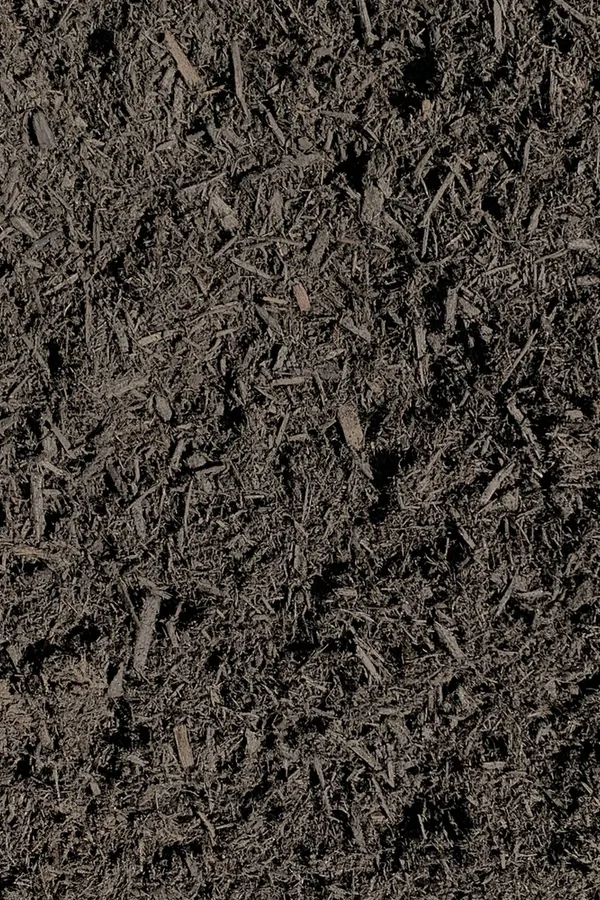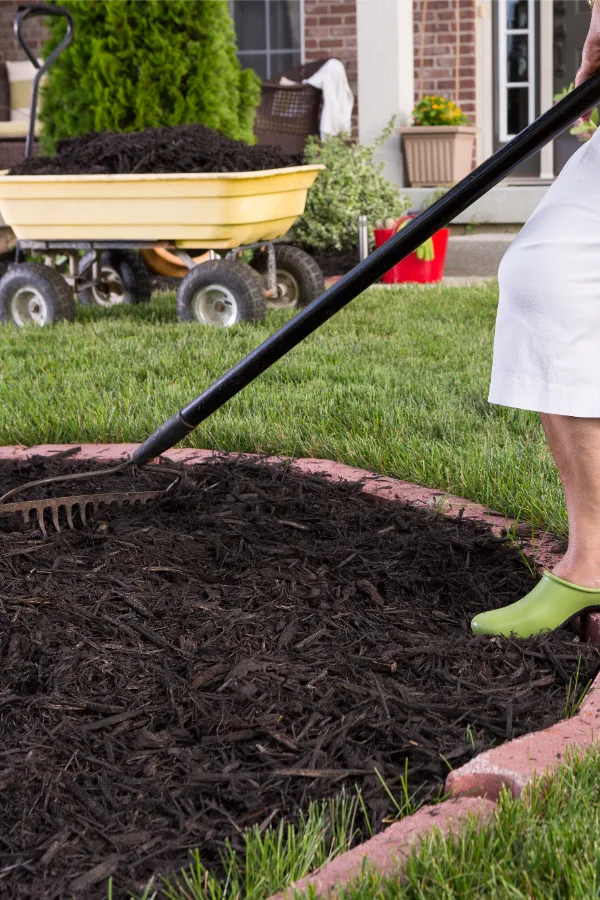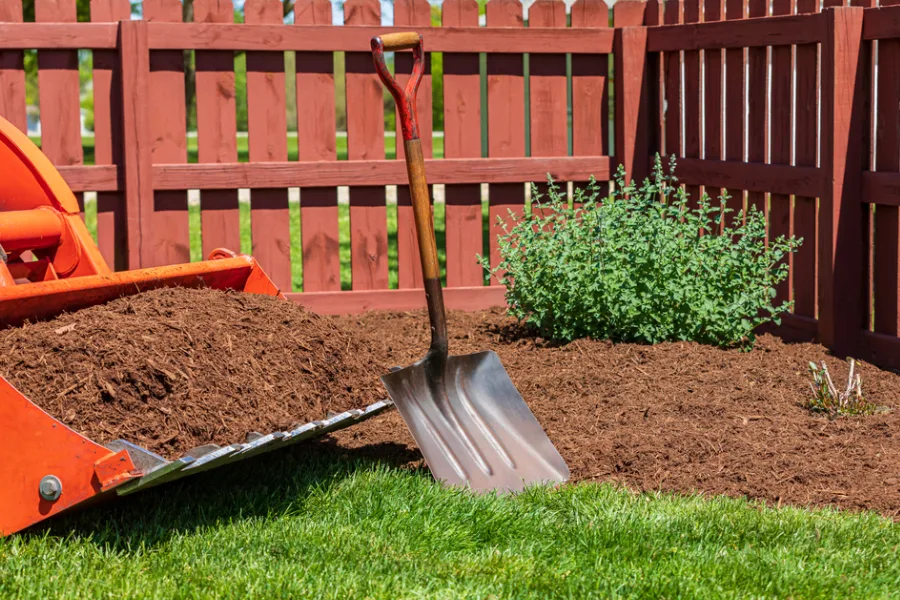When it comes to using mulch to stop weeds in your flowerbeds – four simple tips can make all the difference between having gorgeous, easy care, weed-free beds – or dealing with a weeding nightmare over and over again all summer long!
Mulch is the single greatest weapon in the fight to control weeds. Not only can it help snuff out existing weeds, it also protects new weed seeds from getting a start.
Even more, the right mulch can help to protect and power your perennial and annual flowers all at the same time. In fact, a good layering of mulch has a long, long list of benefits for plants. In addition to stopping weeds, it can also help hold valuable moisture in, regulate the soil temperature and protect plants from disease.

But one thing is for sure, not all mulches are the same. Some mulches can not only stop weeds, but also help to improve your soil. Meanwhile, other mulching choices give you far less protection against weeds – and can even change the make-up of your soil, harming your plants over time.
Equally important to selecting the right mulch is how you apply and maintain it around your plants. With that in mind, here are 4 simple secrets for mulching your flowerbeds for weed-free success!
Mulching Flowerbeds To Stop Weeds
#1) Selecting The Best Mulch For Your Flowerbeds
It used to be that there were only a handful of selections available for flowerbed mulch. Now there are hundreds upon hundreds! But that doesn’t mean they are all good for your plants.
One of the biggest mistakes homeowners make when mulching is selecting a mulch that is too fine. Often called ultra-fine, super-fine or triple shredded mulch, this type of mulch may seem appealing for both its appearance and ease of spreading. But unfortunately, it is a poor choice for stopping weeds.
The issue with super-fine mulch is that it more like soil than mulch. Not only will it not block weed seeds from the soil, it will actually grow weeds within it. Even worse, it breaks down so quickly into the soil, you need to constantly replace it.

A good mulch needs to keep blowing and drifting weeds from finding the soil below. It also needs to help insulate plants and conserve moisture in the soil.
When mulching flowerbeds, super shredded and ultra fine mulches simply do not provide this protection. Instead of forming a barrier, they actually become part of the soil layer. They also disappear quickly, leading to more expense and more mulching.
The Best Choices For Mulch – How To Mulch Flowerbeds To Stop Weeds
So what is the best choice for mulch? For maximum protection, select a double shredded hardwood or hardwood bark mulch. They both provide extremely good protection for the soil below. It also breaks down at a much slower rate. Even better, as it does, it replenishes nutrients in the soil.
In addition to hardwood, cedar is another good option. Again, look for a double or mid-grade shredded product for best results. One mulch to avoid is cypress. Although popular, it does not improve the soil as it breaks down.

Cypress is also not very adept at preventing weeds. Its more jagged and woody make-up allows seeds to find their way to the soil below quite easily. Pine needles can be an option in beds with more acidic-loving plants (azaleas, blueberry bushes, etc.), but are not the best option for most perennial plants.
Gravel and stone are two more options that are not usually in the best interest of plants. They absorb heat during the day, and can easily burn plants. Gravel and stone also allow weed seeds to easily find a way to the soil surface to germinate.
#2) Put Your Mulch On Thick – How To Mulch Flowerbeds To Stop Weeds
Just as important as selecting the right mulch is applying the right thickness of mulch. In fact, under-mulching is one of the biggest culprits when it comes to allowing weeds to take over a flowerbed.
In order to stop weeds and insulate plants, mulch needs to be applied at least four inches thick in flowerbeds. Anything less simply isn’t enough to keep weeds from finding a path to the soil. For best results, a four to six inch layer is the perfect amount for both insulating and weed protection.

On the flip side, be careful not to over-mulch. More is not always better when it comes to mulch. When applied too thickly, it will suffocate plants and keep oxygen and water from getting to the roots. This same principal applies to vegetable gardens too. (See: How To Easily Eliminate Garden Weeds)
#3) Don’t Stir The Mulch – How To Mulch Flowerbeds To Stop Weeds
When it comes to keeping your mulch effective in the fight against weeds, one of the best ways to help is to leave it alone! One of the easiest ways to invite weed issues into flowerbeds is by disturbing the mulch.
Raking and turning mulch to “freshen” up the look of a flowerbed causes much more harm than good. The minute mulch is turned or flipped, all of the weed seeds on top of the mulch now find an easy path to the surface below. And once there, the germination begins!
Instead of turning the mulch, simply add a thin top coat to freshen it up. This way, the protective barrier stays in tact, and weeds simply can’t find a way to germinate.
#4) Fill Your Beds With Plants – How To Mulch Flowerbeds To Stop Weeds
Finally, another great way to keep your flowerbeds weed free is to fill them with plants – and not wide open spaces of mulch!

The best weed blockers of all are the foliage of plants. Large open expanses of mulch are not only difficult and expensive to maintain, they also make it easy for weed seeds to find a home. Instead, plant perennials closer together so that they can help in the fight against weeds.
The best part of all, it doesn’t have to be expensive. By simply dividing your perennial plants every few years, you can double or even triple the amount of plants in your flowerbeds – for free! The more plants you have, the less mulch you will need and use. (See : 6 Great Drought Resistant Perennials To Plant)
Here is to keeping your flowerbeds weed free this year – and enjoying their beauty without all of that hard work!
Follow Our Facebook Page For Great Gardening Tips And Advice! This Is My Garden Facebook Page
This Is My Garden is a garden website created by gardeners, for gardeners. Jim and Mary Competti have been writing gardening, DIY and recipe articles and books and speaking for over 15 years from their 46 acre Ohio farm. They publish three articles every week, 52 weeks a year. Sign up today to follow via email, or follow along!

